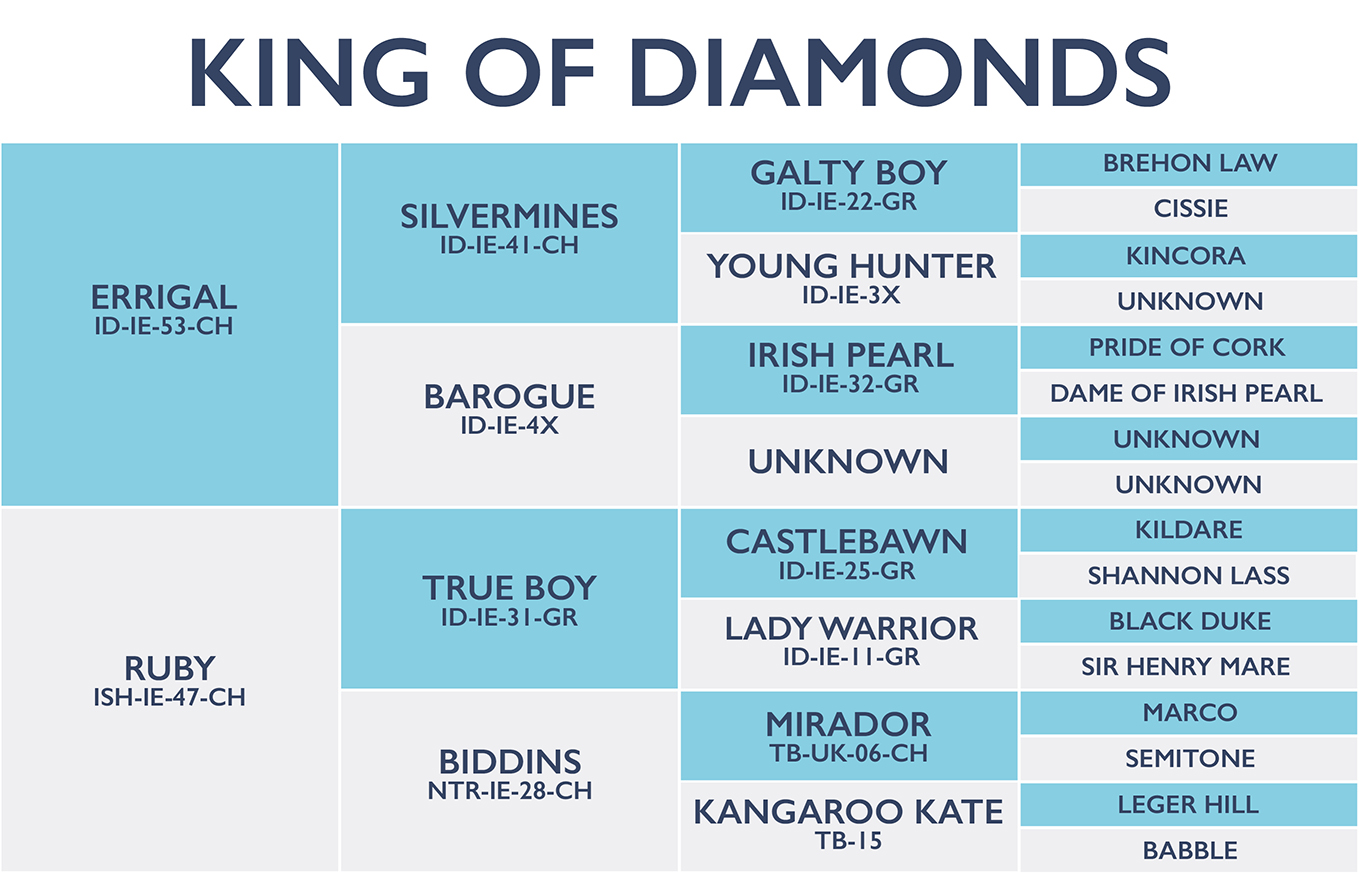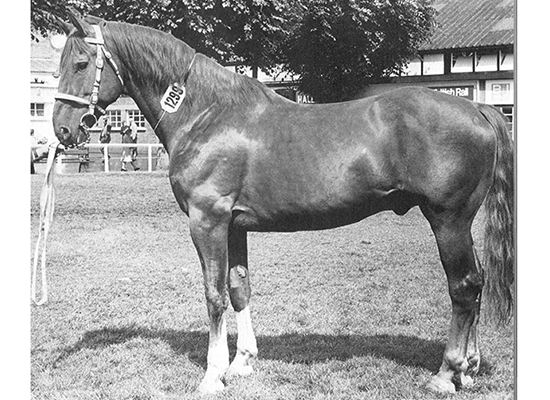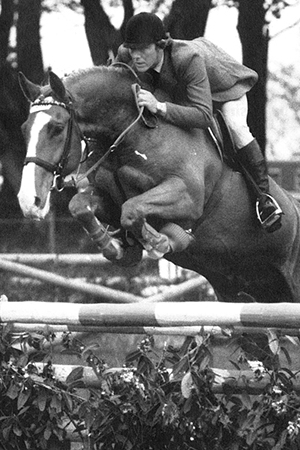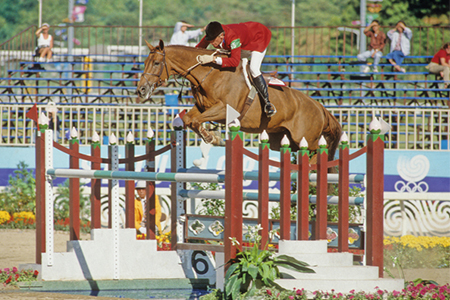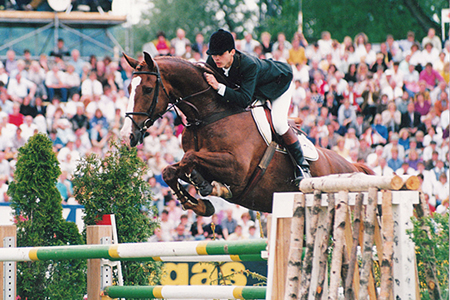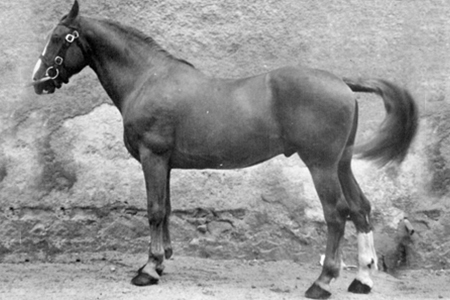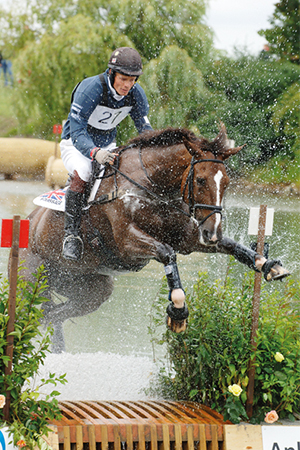1962-1991 Chestnut
Breeder: Tom O’Neill
Described in ‘The Irish Draught Horse’ by Alex Fell as ‘the single best known Irish Draught of modern times’, King of Diamonds has been described as the saviour of the Irish Draught as a breed, as a result of his ‘prepotent jumping ability’.
Eddie Macken and Carroll’s Royal Lion by King of Diamonds
King of Diamonds is ranked 21st in the World Breeding Rankings for the period 1992 – 2001 on the basis of 19 of his progeny, including Rodrigo Pessoa’s Special Envoy, John Ledingham’s Millstreet Ruby, and Joe Fargis’ Mill Pearl.
Joe Fargis and Mill Pearl were 7th at the Seoul Olympic Games, the following year, they were 4th in the World Cup final in Tampa
Technically neither King of Diamonds nor his great rival for the ‘King of the Irish Jumping Sires’ title, Clover Hill, were purebred Irish Draught horses. They were approved because they were Irish Draught in type, with partial pedigree, raising the question as to whether the Irish Draught is in reality a breed or is it a type? Or is it indeed just like all the other Warmblood ‘breeds’ in Europe, an ongoing work in progress, starting with local working mares bred to Thoroughbreds, followed by an increasing trans-national cross pollination?
Special Envoy and Rodrigo Pessoa
King of Diamonds dominates the Irish Studbook. He has more than forty stallion sons or grandsons, bred either directly in the sire line or through his daughters, although some experts argue that the inspectors were a bit overwhelmed by King of Diamonds’ reputation, and perhaps a little lax in some they passed.
Errigal was the sire of King of Diamonds and his full-brother, Slyguff Hero
King of Diamonds was by Errigal, a son of Silvermines, which was the Irish Draught side of his parentage. His dam Ruby was by True Boy, a half-bred sire who traces to Kildare, a well-known Irish Draught stallion at the beginning of the century. The grand dam was the Thoroughbred mare Biddens.
William Fox-Pitt and Ballincoola – by Highland King out of a King of Diamonds mare
King of Diamonds was a jumper in his own right, but he achieved his Grade A status in an era when Irish jumping tracks were not so demanding.
When King of Diamonds died in 1991 at the age of 29 he had eleven stallion sons on the Irish Horse Register and two grandsons. Four years later his descendant stallions numbered over forty.
His total personal registered progeny at the time of his death in 1992 was 547. The registered progeny of his stallion sons, to say nothing at all of his daughter’s descendants, expands his influence numerically to thousands.
